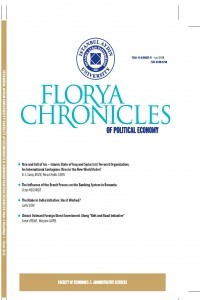The Impact of Trade Unions on Employee Performance in Cameroon: Teachers’ and Drivers’ Unions Cases
The Impact of Trade Unions on Employee Performance in Cameroon: Teachers’ and Drivers’ Unions Cases
The intention of this research is to examine the impact of trade unionism
on employee performance in Cameroon. The teachers and the drivers
trade unions are selected as the scope of the study. Both quantitative
and qualitative data are collected with questionnaires and structured
interviews. Categorical data was analysed as proportions and frequencies
and the relationship between categorical variables was assessed using
Chi-Square test. The findings revealed by the study evidently show that
trade unions play a vital role in employee-performance in Cameroon. It is
revealed in this research that, the key reason teachers and drivers joined
trade unions in Cameroon is for the protection of workers’ rights. The
main strategies used by trade unions are organising, collective bargaining,
alliance building and action. It was also revealed that trade unions have as
core mandates, the promotion and protection of the rights and the socioeconomic
interest of their members. Therefore, as a recommendation,
Trade Unions should stay away from confrontation with employers and
make negotiations for collective bargaining. Also, employers should
provide upskilling and training opportunities to their employees as this
improves employee-performance. Conclusively, Teachers and Drivers’
Trade Unions in Cameroon should set as its top priority, the protection of
workers’ rights and promotion of their socio-economic interests.
Keywords:
Trade Union, Employee performance, Cameroon Chi-square, Anglophone crisis,
___
- [1] Aziz, A. A. (2010). The Extent to Which Labor Unions Can Influence Human Resource Practices in Bahrain, Master’s thesis, Open University Malaysia.
- [2] Ash & Seago, (2004). The effects of Registered Nurses’ Unions on Heart-Attack Mortality. Industrial and Labour Relations Review 57(3).
- [3] Jepkorir, B. M. (2014). “The Effect of Trade Unions on Organizational Productivity in the Cement Manufacturing Industry in Nairobi,” School of Business, University of Nairobi.
- [4] Budd, John W. & Bhave, Devasheesh. (2008). “Values, Ideologies, and Frames of Reference in Industrial Relations”, in Sage Handbook of industrial Relations, Sage.
- [5] Clark, A. E., Kristensen, N. & Westergard-Nielsen. (2006). Job Satisfaction and Coworker.
- [6] Devinatz, V. G. (2013). The Crisis of U.S. trade unionism and what needs to be done. Labour Law Journal, 64(1), 5-19.
- [7] Freeman, R. B. & J. L. Medoff (1981). “The Impact of the Percentage Organized on Union and Nonunion Wages”, Review of Economics and Statistics, 63, 561-572.
- [8] Gunderson (2005). Two faces of union voice in the public sector/ SpringerLink; https://link.spinger.com
- [9] Hoxby (2001). Trade Union Membership and Influence 1999-2009; centre for Union studies Uk, cep.Ise.ac.uk.
- [10] Jones, Derek, & Takao Kato. (2005). “The Productivity Effects of Employee Stock-Ownership Plans and Bonuses: Evidence from Japanese Panel Data.” American Economic Review 85 : 391-414.
- [11] McNicholas, C. L., Rhinehart, M Poydock, H Shierholz & D Perez (2020). “Why unions are good for workers—especially in a crisis like COVID-19: 12 policies that would boost worker rights, safety, and wages”. Economic Policy Institute Report.
- [12] Mbide Charles Kude, (2014). “Trade Union Freedom of Association and Collective Bargaining” The Cameroon Experience: The Evolution of Trade Unionism and the Prospects for Alternatives to the Labour Question.
- [13] Morikawa, M. (2010) Labour unions and productivity: An empirical analysis using Japanese firm level data. Labour Economics 17(6): 1030- 1037
- [14] Nkirote, N. & Kiiru, D. (2018). Influence of selected trade unions activities on performance of public universities in Kenya. International Academic Journal of Human Resource and Business Administration, 3(4), 174-206.
- [15] Trades Union Congress (TUC) – Rosa Luxemburg Foundation (RLF), “Trade Unions and Industrial Relations in Ghana”, 2012.
- ISSN: 2149-5750
- Yayın Aralığı: Yılda 2 Sayı
- Başlangıç: 2015
- Yayıncı: İstanbul Aydın Üniversitesi
